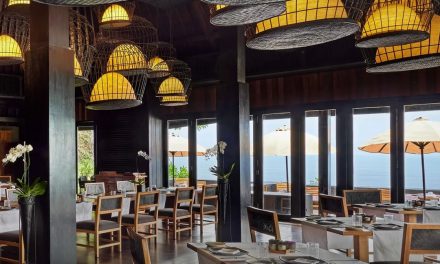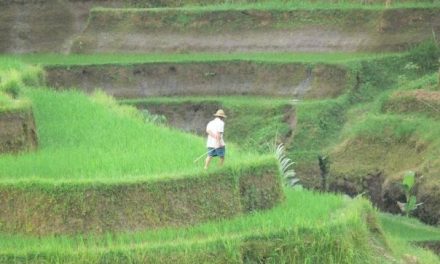When you think of Bali, what springs to mind? Is it the serene beaches, lively nightlife, or perhaps the enchanting rice terraces that seem to extend into infinity? Ubud, nestled in the hills of Bali, is famous for these lush green landscapes. As a photographer, stepping into the rice fields is stepping into a world of opportunity, but also a world of challenges. Today, I want to share some personal experiences, insights, and practical advice for capturing the magic of Ubud’s rice fields.
The Allure of the Rice Fields
Let me set the scene for you. Picture this: it’s early morning, the sun is just beginning to rise, casting a golden hue over the emerald fields. The sound of cicadas fills the air, while mist rises gracefully from the rows of rice. It’s a photographer’s dream. As I picked up my camera on that first morning, however, I quickly realized that photographing these iconic landscapes comes with its own set of challenges.
1. The Light Factor
One of the biggest challenges is lighting. Early mornings or late afternoons, known as the golden hours, are the ideal times for capturing the most stunning images. However, the light can be tricky. As I ventured into the fields, I found that the sunlight often created harsh contrasts, especially when peeking through the trees or glistening over the water-filled paddies.
Pro Tip: Leverage the Glory of Golden Hour
To combat this, I suggest planning your shoots around these times, but also being mindful of how to manage harsh light. Consider using a polarizing filter to reduce glare on water surfaces. Try to find shaded areas within the fields where the light is softer, or position yourself so that the light is hitting your subject from the side, creating a more three-dimensional feel.
2. Composition Conundrums
Next up is composition. The rice fields are sprawling and stunning, yet they can also be overwhelming. How do you make a photograph feel intimate and not just a wide shot of endless green? While wandering through the fields, I found myself taking a myriad of wide-angle shots, but they often felt flat and uninviting.
Pro Tip: Find Depth and Focus
Instead, try to utilize leading lines to draw the viewer’s eye into the photograph. Get close to the rice stalks or find a path leading through the fields, creating a pathway for the viewer to follow. This adds depth and dimension, transforming a flat landscape into a more engaging story. Don’t be afraid to experiment with foreground elements – perhaps a farmer working in the fields can add context and life to your images.
3. The Weather Gamble
Ah, Bali weather! It can be quite unpredictable. I remember one day when I planned to shoot, the skies were blue and clear, only to have a sudden downpour drench me and my gear. Wet rice fields can create stunning reflections, but capturing that moment requires quick thinking and even quicker adjustments.
Pro Tip: Embrace the Unexpected
Always be prepared for the weather. Carry a waterproof cover for your camera and a small towel to wipe down gear. Also, rainy days can produce unique and interesting compositions. Look for reflections in puddles or the way the rain enhances the colors of the foliage and the rice. Sometimes the most beautiful shots come from those unexpected moments.
4. Cultural Sensitivity
When photographing in the rice fields, there’s also the aspect of cultural sensitivity. The fields are often tended by local farmers and are integral to their livelihoods. During my first visit, I felt like I was intruding as I snapped away near a group of workers. It was essential for me to respect their space.
Pro Tip: Connect with Locals
Engaging with the community can lead to more authentic shots. Ask for permission before photographing individuals and show genuine interest in their work. Many farmers are more than happy to pose or share their stories if approached respectfully. This not only enriches your photographs but can lead to memorable interactions. Once, I spent an afternoon with a local family who invited me to share in their lunch. Their warmth and hospitality provided an unforgettable experience and some truly unique photos.
5. The Overwhelming Rush
Lastly, managing the overcrowding can be tricky. Ubud’s rice fields are incredibly popular with tourists and photographers alike. I once arrived at a famous viewpoint, expecting to capture a serene image, only to find it teeming with visitors all vying for the same shot. It was disheartening!
Pro Tip: Explore Off the Beaten Path
To escape the crowds, consider exploring lesser-known rice terraces. Look for smaller fields that may not be on the usual tourist maps. You can often find hidden gems or stunning perspectives just a little off the main track. Not only will it be less crowded, but you might also discover new angles and stories that others haven’t captured.
Conclusion
Photographing Ubud’s rice fields is both a delightful and challenging experience. With the right preparations and an open heart, you’ll not only capture the stunning beauty of these landscapes but also the spirit of the wonderful people who call it home. So, grab your camera, dig out that polarizing filter, and get ready to embrace the unique challenges and rewards of photographing one of Bali’s most iconic sights. Happy shooting!






